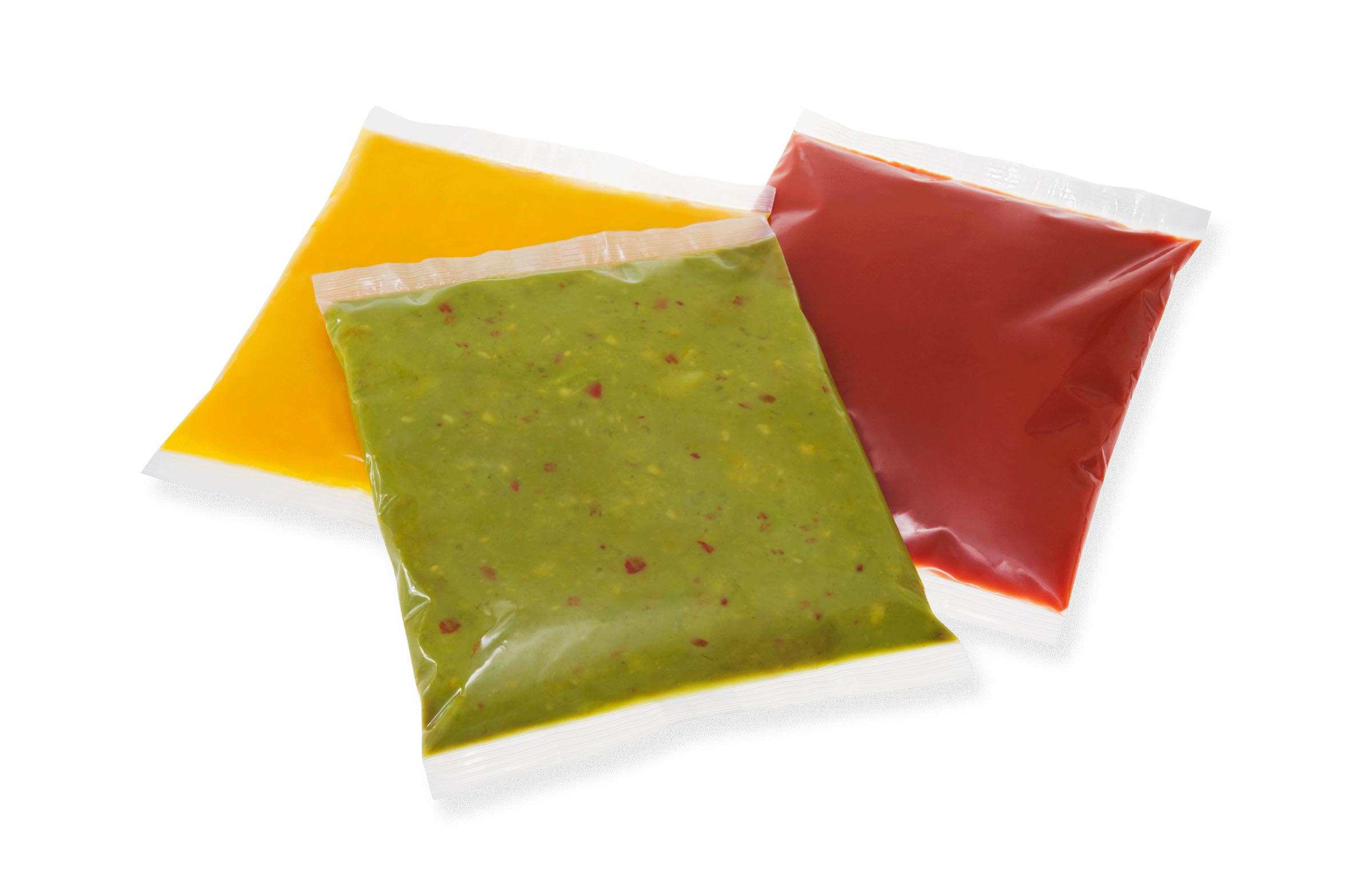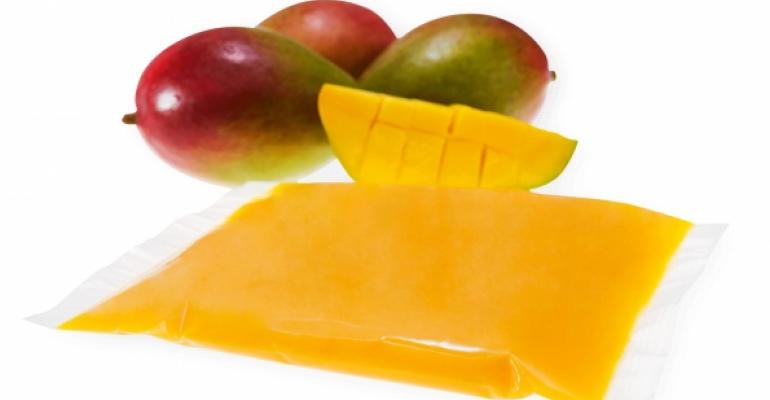The quest for economy, quality and safety is leading a growing number of foodservice operators to switch from traditional, rigid containers to flexible packaging for soups, sauces, condiments and many other products.
“Foodservice is an extremely cost-driven industry,” says Myra Foster, Global Executive Director, Fluids Packaging, for Sealed Air Corp.’s Food Care Division, of which Cryovac® brand food packaging is a part. “The economic benefits and other advantages of switching from rigid to flexible packaging are very compelling.”
Compared to cans and other rigid packages such as pails and tubs, flexible pouches recommend themselves in a number of ways. First, they offer significant savings in distribution costs because thin, compact pouches are much more space-efficient to ship than are cans. Simply put, many more pouches fit in a truckload.
Once at the unit, pouches take up much less space on the shelf or in the walk-in than do rigid containers, a boon to operators who keep the back-of-the-house footprint small to maximize revenue-producing seats in the front. Compared to metal cans, flexible pouches are 90 percent lighter and result in 76 percent less packaging waste, reducing disposal costs as well.
Another major advantage of flexible over rigid packaging is safety. Many flexible pouches open with an easy-open tear notch. There are no sharp can edges to cut fingers, no metal shards to fall into the food and no food residues left on a can opener to create potential contamination.
Not to be overlooked is the food quality argument. A thin, flexible pouch is heat-processed in the manufacturing plant more quickly than is a large, dense #10 can. Food that is exposed to less temperature abuse arguably tastes better and is more nutritious.
Although using #10 cans remains a habit for some operators, flexible packaging is making significant inroads in the industry, especially in the pizza segment, where pouches with barrier-film technology protect the color and flavor of tomato-based products. Also moving to flexible packages are those that feature soup. A pouch of soup can be rethermalized right in the package, saving the labor that would be spent transferring soup packaged in a can or other rigid container to a secondary container for heating.
 Sealed Air flexible packaging technologies provide the aforementioned operational advantages in a variety of storage formats — shelf-stable, refrigerated and frozen — and desired end uses.
Sealed Air flexible packaging technologies provide the aforementioned operational advantages in a variety of storage formats — shelf-stable, refrigerated and frozen — and desired end uses.
For operators who require shelf-stable flexible packaging, Cryovac® Flavour Mark™ pouches may be the solution. Flavour Mark™ retort pouches are designed for products such as chili with meat, soups, stews, vegetables, olives, mushrooms and sauces. Flavour Mark™ aseptic packages are designed for condiments, stocks, broths, liquid dairy products, fruit purees and sauces. Both are perfect for operations that have limited refrigerator/freezer capacity, such as catering and kiosk facilities. Using shelf-stable packages such as these in place of frozen products results in quicker, easier service because no thawing is needed.
Cryovac® Freshness Plus® packaging technology appeals to operators who want a refrigerated or frozen product with a “like fresh” taste and little or no preservatives. An oxygen-scavenging technology embedded in the film helps food products retain their quality longer, minimizing or eliminating the need for preservatives. It slows aerobic microbial growth and oxidative deterioration of flavors, color and nutrients, preserving the color and integrity of delicate foods such as fruit, tomato products and guacamole.
“The packaging helps preserve the color of the product, thus minimizing the amount or the need to add ingredients to the product to do that,” says Foster. “Operators who desire healthy menus or clean labels may benefit from this.”
What’s more, flexible packages come in a variety of sizes, allowing operators to customize the package to the end use.
“Instead of opening a big #10 can of product at the end of the day to serve customers who come in late, it’s advantageous to use a much smaller flexible package,” says Foster.
In addition, having ingredients portioned in flexible pouches promotes consistency, reduces waste and eliminates the labor that would otherwise be spent on weighing ingredients.
“Say you need 3 oz. of dressing to make a batch of coleslaw,” says Foster. “Flexible packaging lets you deliver that exact amount to make the recipe.”
Sealed Air is ready to share its expertise with operators on everything from packaging solutions to operational improvements to allergen-risk reduction.
For more information, visit cryovac.com or call 800-391-5645.

